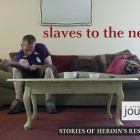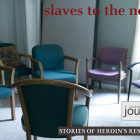
Michelle Barclay and Mary Hermann on A Foster Child Pining for his Mother
|
Logan* was five when he entered foster care for the second time. Nine years later, at 14, he’s still in foster care. This Georgia boy’s long stay in the foster care system started when his mother signed a temporary voluntary relinquishment of her parental rights because of her alcohol and drug abuse. Back then, the plan was to have Logan stay in foster care or placed with relatives while she worked on her rehabilitation. The goal was to reunify the family and the plan didn’t change. Logan has had seven placements while in foster care. Today, he lives in a group home and has a close relationship with the director of that home and his court appointed special advocate. He has also maintained a bond with his mother over all this time. They talk by phone, have weekly family counseling by phone and last summer he spent a week in her home in Texas. Logan’s mother has changed and improved her situation over the last nine years. She is no longer using drugs and she has had another child whom she is raising in Texas. She is fragile, but has been fairly stable for six years. She expresses affection for Logan, something that has sustained him during all these years of being so alone.








